SOUTHWESTERN TURKEY
With optional extension to Cappadocia
April 04-18, 2010
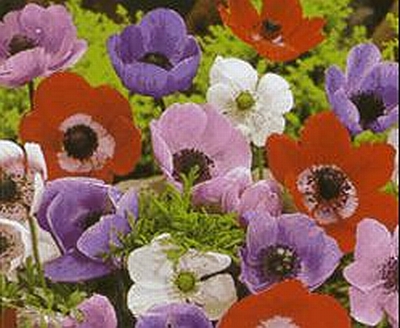
Early anemones ornament the Turkish coast.
We are pleased to offer another Spring Botanical Tour to Turkey. Designed to take advantage of the expertise of two personable lecturers, the April 2010 tour will have the company of Dr. Gokhan Deniz, an intrepid young Turkish taxonomist, and Stig Dalstrom, a Swedish orchidologist and botanical illustrator.
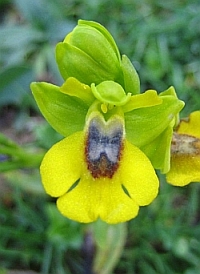
Ophrys lutea
Share our experts’ enthusiasms and knowledge as our small group rambles through protected forests, fields, and alpine meadows. The tour focuses on the verdant environment but also includes visits to key archeological sites to provide participants with an understanding of how geography and human activity have affected Turkey’s endemic and introduced flora. As always, our tour will also have expert local guides to illuminate Turkey’s cultures and history.
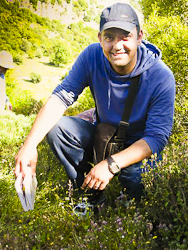
Dr. Gokhan Deniz
Gokhan is assistant director of the Biodiversity Research, Development and Application Center at Akdeniz University (MED-BIOM) in the Mediterranean city of Antalya. He has made important field surveys of Turkey’s native species, ranging from endangered terrestrial orchids to old-growth stands of Cedrus libani. He will introduce us to the varied habitats where both common and rare flora are subject to the environmental challenges facing Turkey today.
Longtime resident of Sarasota, Florida, where he was Curator of Orchids for The Marie Selby Botanical Gardens, orchidologist Stig Dalstrom is also a renowned botanical illustrator. His distinctive paintings detail species he has observed in the wild—from Florida’s Fakahatchee Swamp to Amazonia and Bhutan.

Stig Dalstrom
Both Gokhan and Stig are engaging environmental educators, at ease speaking with specialists, students, and the general public.
If you’ve any interest in our April 2010 program, please let us know as soon as possible. Because we select charming (but sometimes very small) boutique hotels and mountain lodges, space on our tours is limited. We plan our itineraries carefully and can gain access to some of Turkey’s most interesting and delicate habitats because our botanical groups are never large.
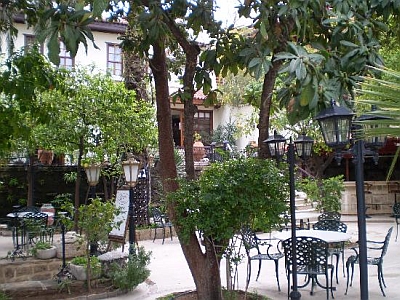
A loquat tree shades the courtyard of our Antalya hotel.
Crocus, wild tulips, hyacinths, snowdrops, and Turkey’s rare terrestrial orchids will greet us in the forests and valleys along the coast of southwestern Turkey. Many of the flowering plants on this tour will be at higher elevations (some above 3,000 feet), so get in shape to botanize with our personable team of local naturalists and professional guides.
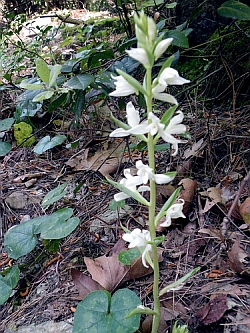
Terrestrial Orchid
Cephalanthera sp.
Photo: Mary Comber, 2009
We’ll hike through overgrown, pre-Christian ruins and explore protected habitats as well as small villages, where the rhythms of ancient agricultural practices and folk culture persist. We’ll stay in charming accommodations, savor local produce, and investigate parts of Turkey most visitors never see.
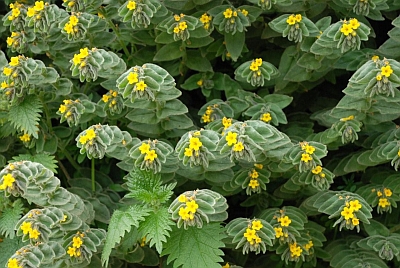
Discover Anatolia’s Unique Flora
(Alkanna orientalis, photo by Ceylan Zere)
To entice those less botanically-inclined to join their plant-focused friends, our core trip, begins with two days in the bewitching metropolis of Istanbul. Throughout the entire tour, we’ll visit food bazaars, museums, monuments, and archeological sites like Ephesus to provide our guests a broader context in which to appreciate Turkey’s botanical riches.

Istanbul’s Basilica of Haghia Sophia.
We’ve also prepared an optional Cappadocia extension, April 17 — 20. Extension participants will follow caravan routes through the Toros (Taurus) Mountains and onto the vast Anatolian Plateau. There, we’ll visit the old Silk Road town of Konya, a center of Sufi culture, best known for its Whirling Dervishes. Travelling east, into the valleys of Cappadocia, we’ll spend two full days enjoying the surreal volcanic landscape with its rock-cut dwellings and churches, an area designated as a World Heritage site by UNESCO. Our accommodations will be a small inn whose guest rooms—with all modern amenities—have been cut into the “living” rock.
As always, we’re delighted to design add-on programs for Istanbul and any other region of Turkey, northern Syria, or the Greek Islands.
Please call for more information about any of these programs. Complete itineraries with costs for the Spring 2010 Botanical Tour and Cappadocia extension will are now available.To protect the delicate habitats included in our nature tours, we do not publish our itineraries online. Space is limited and complete itineraries will be emailed only upon request. Please email first to tell us of your interest. You may also leave a phone message on 941-961-4448. We respond promptly to all inquiries.
Our Botanical Tours: General Info
Please see this general overview of these programs—

Wild Anatolian Tulips
Somewhere, something’s always blooming in Turkey… and we’re delighted to have an engaging team of local and international specialists to introduce you to the botanical treasures of the country. Many of our favorite garden plants— tulips, hyacinths, orchids, rhododendrons, crocuses, lilies, and cyclamen— are indigenous to Anatolia. It is always exciting to watch our travelling companions meet some of these familiar species for the first time, on their home turf.
We invite you to share this experience: Join Turkish botanists, taxonomists, archeological guides, culinary wizards, and garden buffs as we explore delicate habitats, monitor endangered species, and deepen our understanding of the people and plants of Asia Minor.
Last year’s spring program was very well received. We hiked legendary slopes above the Aegean and contemplated the ruins of the Classical sites of Herakleia and Didyma. We stepped gingerly around miniature orchids in Lycia’s forests and followed the seasonal routes of nomadic Turkmen woodcutters as we read the botanical commentaries of Herodotus. Each day’s adventures gave us insights into how climate and geography have shaped this fascinating nation. On one spectacular day, tour members found over a dozen different terrestrial orchids!
Our 2010 Spring adventure promises to be even better. We’ll cover some of the same general area we explored in 2009, but we’ve made significant changes—adding additional tour days, appealing accommodations, guest lecturers, and of course, visits to select habitats.

Crocuses brighten Turkish woodlands
The day-by-day itineraries for our April 2010 excursion and optional extension to Cappadocia are now ready to email as PDF files. Once again, our focus is on Turkey’s variety of flora and millennia of agriculture.
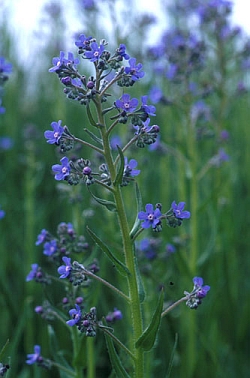
Anchusa barrelieri
Nevertheless, you can be sure we’ll give archaeological, folkloric, and gastronomic wonders their due as we hunt for secretive cyclamen or grape-hyacinths. Many a shy specimen can be found growing between the stones of a Hellenistic ruin or at the base of an Ottoman bridge… Our guides (art historians, plant-lovers, and archeologists) know just where to look; all of them have led hikes and wilderness tours.
Although this tour will be flora-centric it will also offer enticements to those whose interest in plants may not reach beyond the vegetables enjoyed as part of Turkey’s stellar cuisine!
For those of you with more time, we’ll be very happy to help plan customized add-ons so you may indulge your other interests—before or after the botanical program. After all, those tailored programs are what we’re known for.
Whether you are a first-time visitor or a returning Turkophile, exploring the natural environment with local scientists and plant enthusiasts is sure to be a delight.
We arrange our itineraries to take advantage of weather, bloom times, and the availability of distinctive and very comfortable accommodations (rural lodges and boutique hotels).

Iznik Tile
Any given day may include encounters with nomadic foragers, migratory bee-keepers, and traditional farmers. We’ll hike through forest preserves, olive groves, and ancient stream-beds.
Everywhere, we’ll be able to stop and observe native plants in the wild. Whether you are a water-colorist, photographer, gastronomic adventurer, or simply one who enjoys the contemplation of plants, the company of our specialists and their observations will make these trips to Turkey the ones for you.
Accommodations will be on a bed-and-breakfast basis, with half-board in the more remote regions where our overnight lodgings present the best dining option. We do know that plant people are an independent lot, so we want to encourage you to explore Turkey’s culinary diversity.
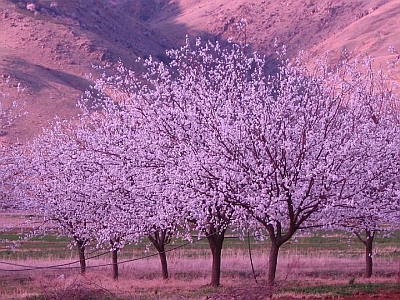
Apricot Blossoms
We’ll try to reduce long bus trips. Instead of trying to cover all the usual archaeological highlights, we’ll select “base-camps” from which you will be able to walk or take short drives to experience Turkey’s varied terrain, ancient artifacts, and contemporary cultures. Professional, bilingual guides and safe, capacious, late-model vehicles with seasoned drivers will be part of the package.
We’ve organized special-interest tours for decades, and we value input from participants. So please email Holly to let us know what else you’d like to have us include for future trips.
Bookmark this page or subscribe to updates by clicking on the turquoise RSS button in the lower right-hand corner of the side-bar. You’ll be the first to know when we update tour information.

Theater at Ephesus
Photo: Ketzel Levine
Sign-up for our 2010 Spring Tour is now closed, but there’s still time to plan your own independent travel before the summer tourist season begins. Whether your passions are for plants, birds, or geology, you can craft a one-of-a-kind itinerary using the historical sites of Asia Minor to frame your naturalist enthusiasms.
Need help designing your Turkish itinerary? Have a look at the Tour Reading List.